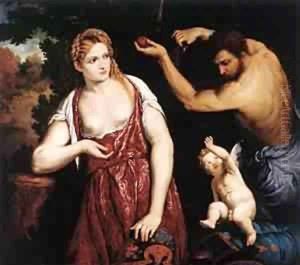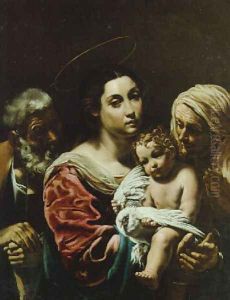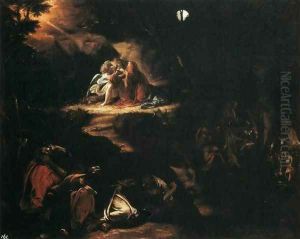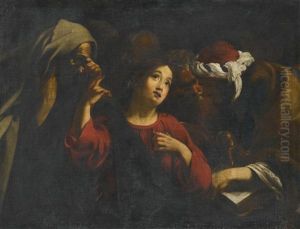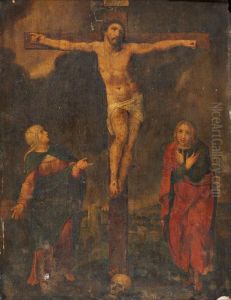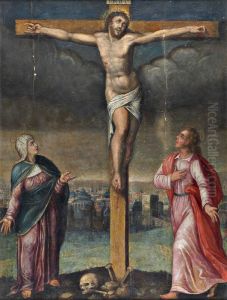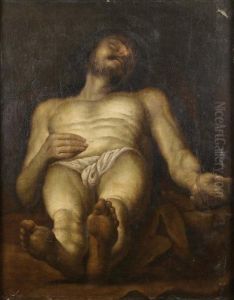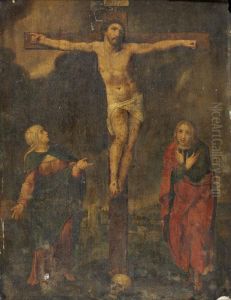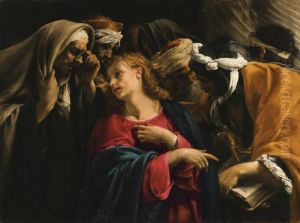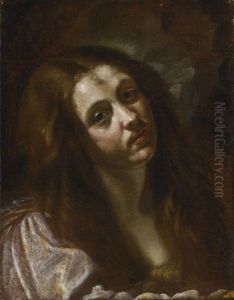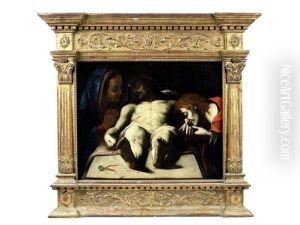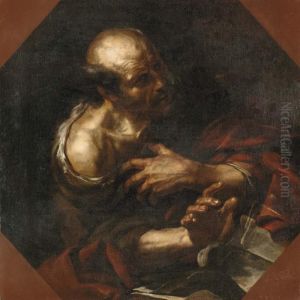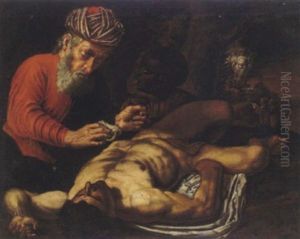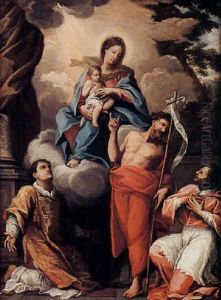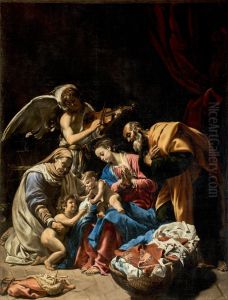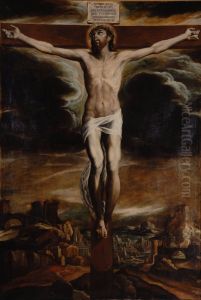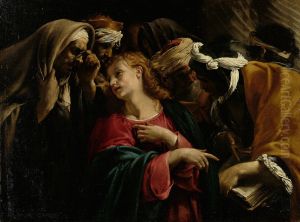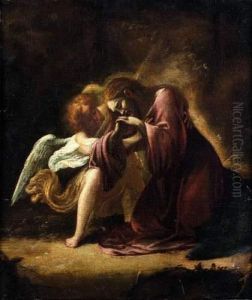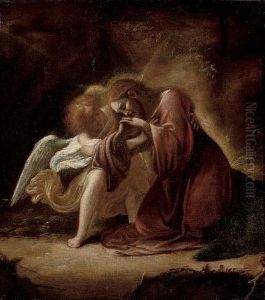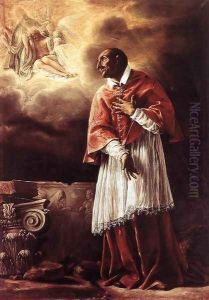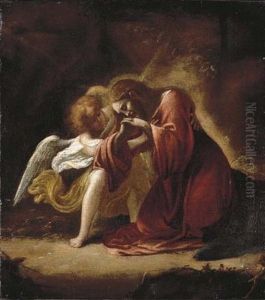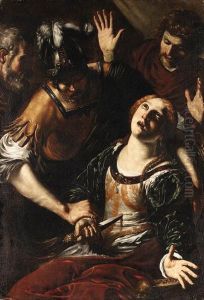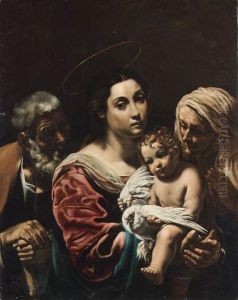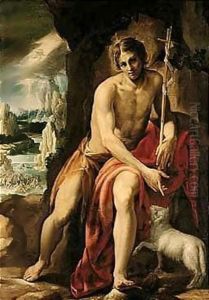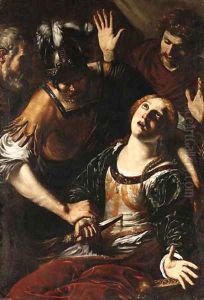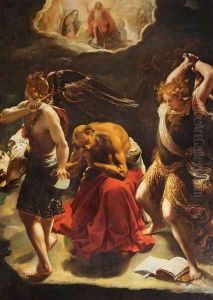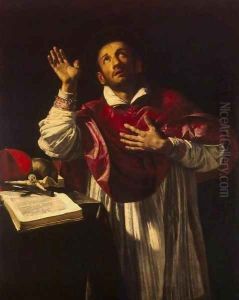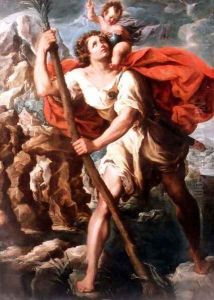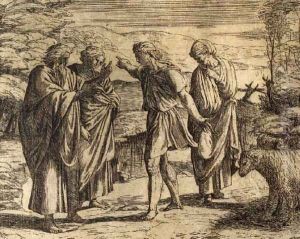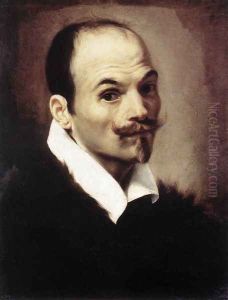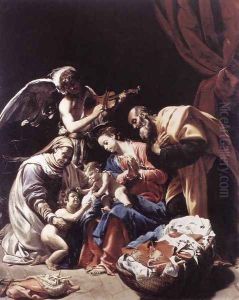Orazio Borgianni Paintings
Orazio Borgianni was an Italian painter and etcher of the late Renaissance and early Baroque periods. Born in Rome in 1574, he is often associated with the stylistic transition from the Renaissance to the Baroque. Borgianni's work is characterized by dramatic lighting, intense emotion, and a focus on realism that was innovative for his time.
Borgianni's early training is not well documented, but it is believed that he may have been a pupil of the Mannerist painters Cavalier d'Arpino or Barocci. However, his style was also profoundly influenced by the work of Caravaggio, whose revolutionary approach to chiaroscuro and realism had a lasting impact on Borgianni's own paintings.
Between 1598 and 1600, Borgianni traveled to Spain, where he worked at the court of King Philip III. His stay in Spain had a significant influence on his artistic development. After returning to Rome, he opened his own workshop and began to establish himself as a prominent artist. His paintings from this period showcase a mature style that incorporates strong chiaroscuro and a powerful sense of drama, such as in his masterpiece 'St. Charles Borromeo' and 'Christ Among the Doctors'.
Borgianni was also an accomplished etcher, and his prints are valued for their technical skill and expressive quality. He was among the first Italian artists to adopt the practice of etching, which allowed for a wider distribution of his designs.
Despite his talent and contributions to the development of Baroque art, Borgianni's career was relatively short. He died in Rome on January 14, 1616, at the age of 42. His works have been appreciated for their emotional depth and technical innovation, and they remain an important part of the history of Italian art. Borgianni's legacy has been somewhat overshadowed by his contemporaries, like Caravaggio and Annibale Carracci, but in recent years his work has been re-evaluated, leading to a renewed appreciation of his contributions to the evolution of European painting.
